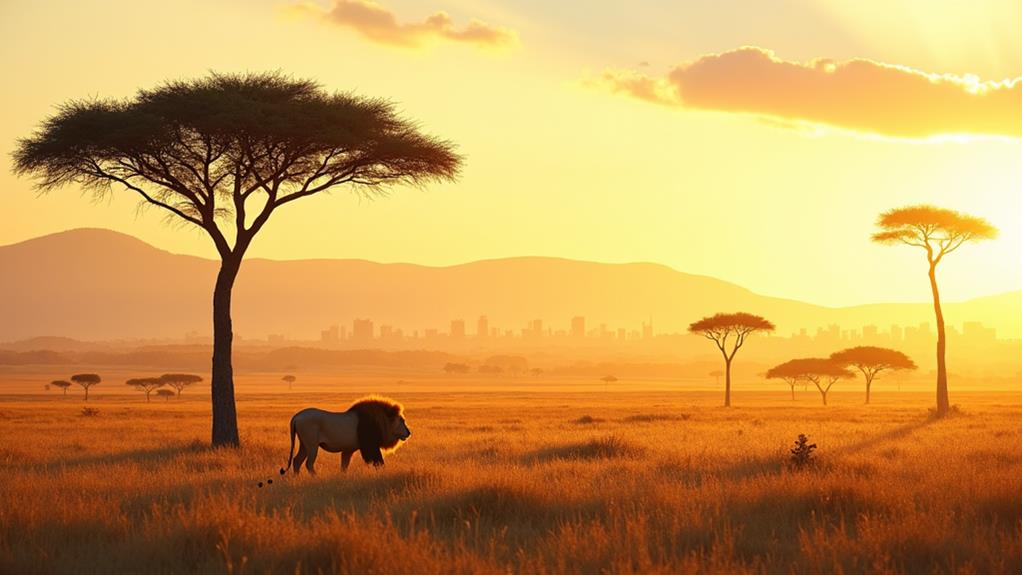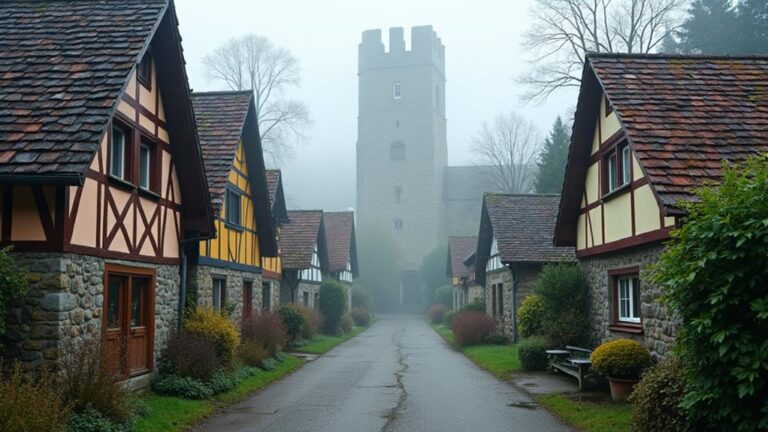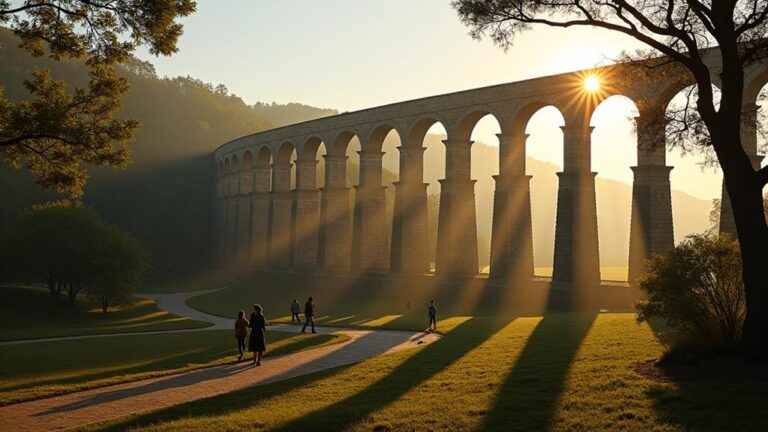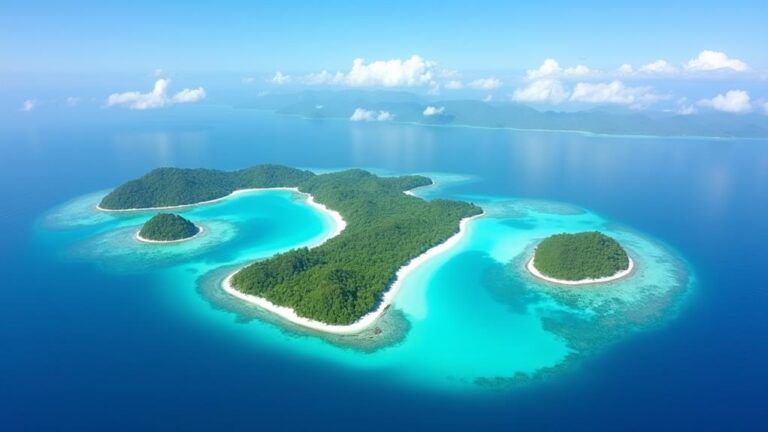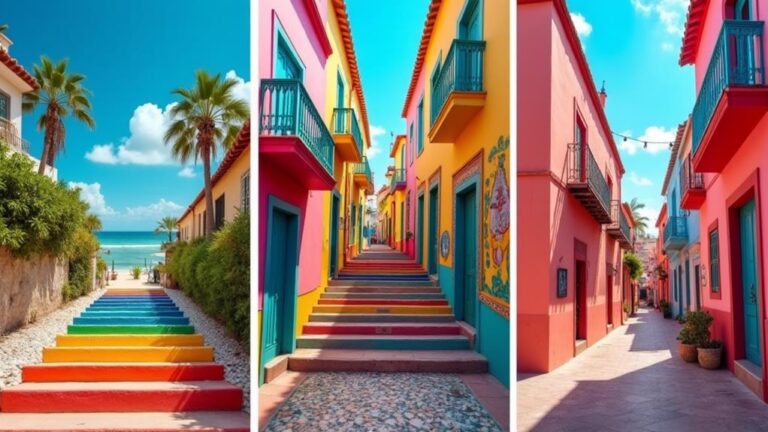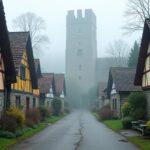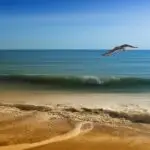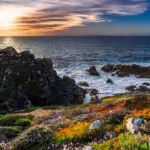When planning a trip to Nairobi, Kenya, you're likely wondering when the best time to visit is. The dry seasons, from June to October and January to February, are generally considered ideal due to the comfortable temperatures and minimal rain. However, there's more to consider than just the weather. You'll also want to think about avoiding the crowds, taking advantage of discounts, and experiencing the city's unique events and activities. By understanding the ins and outs of Nairobi's seasons, you can make the most of your trip. But what are the specifics you should know before making your travel plans?
Contents
- 1 Key Takeaways
- 2 Nairobi's Dry Seasons Explained
- 3 Best Time for Wildlife Viewing
- 4 Rainy Season Travel Tips
- 5 Peak Tourist Season Guide
- 6 How to Avoid the Rain
- 7 Best Months for Hiking
- 8 Minimizing Crowds in Nairobi
- 9 Best Time for City Tours
- 10 Weather and Outdoor Events
- 11 Off-Season Travel Benefits
- 12 Conclusion
Key Takeaways
- The best time to visit Nairobi is during the dry seasons: June to October and January to February, with comfortable temperatures and minimal rain.
- Avoid the rainy season in March, April, May, October, and November, when unpredictable bursts of rain can disrupt travel plans.
- Plan your trip during the off-season for a more personalized experience, fewer tourists, and lower prices for accommodations and activities.
- The peak tourist season for wildlife viewing is from July to October, with improved visibility and higher concentrations of animals at water sources.
- Check the weather forecast before heading out each day and plan around the local commute schedule to avoid rush hour and crowded attractions.
Nairobi's Dry Seasons Explained
During your trip to Nairobi, you'll likely want to avoid the city's wet months, which is why understanding the dry seasons is crucial.
Nairobi's climate patterns are characterized by two distinct dry seasons: the longer dry season from June to October, and the shorter dry season from January to February.
These dry seasons are the perfect time to explore the city, with comfortable temperatures ranging from 15-25°C (59-77°F).
Weather forecasting in Nairobi is relatively accurate, allowing you to plan your trip accordingly.
The dry seasons are ideal for outdoor activities such as hiking, visiting national parks, and exploring the city's scenic surroundings.
The dry air also makes it easier to explore the city's urban areas, with minimal rain and fewer mosquitoes.
Keep in mind that Nairobi's dry seasons can be quite sunny, so be sure to pack sunscreen, sunglasses, and light clothing.
If you're planning to visit during the short dry season in January and February, be prepared for occasional heatwaves, while the longer dry season from June to October is generally cooler and more comfortable.
Best Time for Wildlife Viewing
As you plan your wildlife viewing adventure in Nairobi, you'll want to know the best time to spot the incredible animals that call this city home.
The dry season brings numerous benefits for wildlife viewing, and it just so happens to coincide with the best time of year to visit Nairobi.
From July to October, the dry season is in full swing, which also happens to be the peak tourist season for wildlife enthusiasts like you.
Dry Season Benefits
Nairobi's dry season is kicking in, and you're in for a treat.
As the dry landscapes take over, you'll get to experience the best of Nairobi's wildlife viewing. The dry season, which typically runs from June to October and December to March, is an ideal time to spot animals in their natural habitats.
As the dry season progresses, the vegetation thins out, making it easier to spot animals from a distance.
You'll have the perfect opportunity to see the Big Five – lions, leopards, elephants, buffalo, and rhinoceros – roaming freely in the savannas.
Some of the benefits of visiting Nairobi during the dry season include:
- Improved visibility due to the thinning of vegetation
- Higher concentrations of animals at water sources
- Warmer weather with plenty of sunny skies
- Better road conditions for safaris and game drives
With the dry season offering such great conditions for wildlife viewing, you'll be spoiled for choice when it comes to planning your adventure.
Whether you're a seasoned safari-goer or just starting out, Nairobi's dry season has something for everyone.
Best Time of Year
Dive into the heart of Kenya's wildlife viewing season, and you'll discover the best time of year to witness the untamed beauty of Nairobi.
This season typically falls between July and October, and it's during this time that you'll see the highest concentration of wildlife in the region.
The summer climate in Nairobi is characterized by dry and mild conditions, making it the perfect time to explore the outdoors and get up close to the incredible animals that call this region home.
During this time, the weather patterns are predictable, with clear mornings and cool evenings making it ideal for early morning and late afternoon game drives.
The dry conditions also mean that animals congregate around water sources, making it easier to spot them.
Whether you're looking to see the Big Five – lion, leopard, rhinoceros, elephant, and buffalo – or other incredible species, the best time of year to visit Nairobi for wildlife viewing is undoubtedly between July and October.
With its mild climate and dry conditions, this is the perfect time to experience the beauty of Nairobi's wildlife.
Peak Tourist Season
The peak tourist season for wildlife viewing in Nairobi is the dry season, which falls between July and October.
This period is ideal for spotting animals as they congregate around water sources, making it easier for you to see them. However, it's also the time when you can expect a surge of tourists, with many travelers flocking to the city to experience the best of Nairobi's wildlife.
If you're planning to visit during this time, be prepared for higher travel costs and crowded tourist spots.
- Expect higher prices for accommodation, flights, and safari tours due to the high demand.
- Popular tourist attractions and national parks may be crowded, so plan ahead and book your tours and tickets in advance.
- The dry season can be quite dry, so don't forget to pack sunscreen, a hat, and sunglasses to protect yourself from the sun.
If you're looking for a more budget-friendly option, consider visiting during the shoulder season, when the weather is still dry but the tourist numbers are lower.
Rainy Season Travel Tips
When traveling to Nairobi during the rainy season, you'll want to be prepared for heavy downpours that can turn streets into rivers.
You'll need to plan your day around these unpredictable bursts of rain, and also be aware of the road conditions, which can quickly become impassable.
Avoiding Heavy Downpours
Nairobi's rainy season, which typically falls in March, April, May, October, and November, can be quite a challenge for travelers.
If you're planning to visit Nairobi during this time, it's essential to know how to navigate the heavy downpours. You'll need to adopt some rainy routines to keep you dry and comfortable.
- Be prepared to carry an umbrella at all times – mastering umbrella etiquette is key to avoiding collisions with fellow pedestrians.
- Wear water-repellent shoes or bring a spare pair in case your shoes get wet.
- Take advantage of Nairobi's covered shopping malls and markets to escape the rain.
- Plan your itinerary around the rain, which usually comes in short bursts, and make the most of the sunny intervals.
Road Conditions Precautions
Flooding and poor road conditions are a major concern during Nairobi's rainy season.
You'll want to be extra cautious when driving or taking public transportation during this time. Heavy rains can cause roads to become slippery, and floodwaters can hide deep potholes, making it difficult to navigate the streets.
Be prepared for Traffic congestion as roads may be closed due to flooding or damage, causing detours and delays.
It's essential to check the latest traffic updates before heading out. Additionally, some roads may be closed for Pothole repair, which can further exacerbate traffic congestion.
When driving, make sure to slow down and use low gear when navigating flooded roads.
Avoid driving through deep water, as it can be difficult to determine the depth or potential hazards hidden beneath the surface.
If you're taking public transportation, consider using a reputable company that uses vehicles with good suspension and a reliable driver.
Peak Tourist Season Guide
Dry savannah landscapes and migratory wildlife herds make the Peak Tourist Season in Nairobi, Kenya a prime time for game drives and wildlife exploration.
As you plan your trip, you'll find that the peak season, which typically runs from June to October, offers the perfect opportunity to experience the city's vibrant culture and breathtaking natural beauty.
This period is characterized by warm and sunny weather, making it ideal for outdoor activities like hiking and game drives.
During this time, you can explore various tourist attractions, including:
- National parks and wildlife reserves, such as the Nairobi National Park and the Amboseli National Park
- Seasonal festivals, like the Nairobi International Cultural Festival and the Kenya Music Festival
- Iconic landmarks, including the Kenya National Museum and the Uhuru Gardens
- Local markets, such as the Maasai Market and the City Market
As you visit these attractions, you'll get to experience the city's rich cultural heritage and natural wonders.
The peak season is also a great time to take part in outdoor activities, such as hot air balloon rides and horseback safaris.
With its stunning landscapes and exciting attractions, Nairobi is an ideal destination for your next adventure.
How to Avoid the Rain
Planning ahead to avoid the rainy season in Kenya is crucial for a seamless adventure.
Kenya's rainfall patterns are generally divided into two seasons: the long rains from March to May and the short rains from October to December.
To avoid the rain, you'll want to plan your trip during the dry seasons, from June to September or January to February.
During these dry periods, the weather is generally sunny and mild, making it ideal for exploring Nairobi's attractions.
However, it's always a good idea to be prepared for unexpected rain showers.
Make sure to pack umbrella essentials, such as a compact umbrella and waterproof jacket, to keep you dry in case of a sudden downpour.
Additionally, check the weather forecast before heading out each day to ensure you're prepared for any potential rain.
If you do encounter rain, consider visiting indoor attractions, such as the National Museum of Kenya or the Giraffe Centre, which offer a fun and dry alternative to outdoor activities.
Best Months for Hiking
If you're planning to hit the trails in Nairobi, you'll want to time your visit with the peak hiking season, which typically runs from June to September and December to February.
These periods offer the best conditions for hiking, with dry and sunny weather, and comfortable temperatures.
Now that you know when to go, it's time to choose the best trails to tackle, ranging from easy day hikes to more challenging multi-day treks.
Peak Hiking Season
Nairobi's rugged terrain and dramatic landscapes make it a hiker's paradise, and the best time to lace up your boots is during the peak hiking season.
The dry seasons, from June to October and from December to March, offer the perfect conditions for hiking and mountain climbing.
During these months, the weather is mild, with minimal rainfall and clear skies, making it ideal for exploring the city's numerous hiking trails.
As you plan your hiking adventure in Nairobi, consider the following factors:
- Dry and stable weather: Enjoy clear skies and minimal rainfall, perfect for tackling challenging trails.
- Comfortable temperatures: Mild daytime temperatures and cooler nights make for a more enjoyable hiking experience.
- Improved visibility: Clear skies offer breathtaking views of the city and its surroundings.
- Less mud and erosion: Dry trails are easier to navigate, reducing the risk of accidents and injuries.
During the peak hiking season, you'll have the best chance to experience Nairobi's stunning landscapes and scenic views.
Whether you're a seasoned hiker or just starting out, the city's trails have something to offer, from leisurely strolls to more challenging mountain climbing routes.
Best Trails
You've got your hiking boots on and the weather's just right – now it's time to choose a trail.
Nairobi has plenty of hiking routes to offer, from leisurely strolls to challenging climbs.
For a panoramic view of the city, head to Ngong Hills, a series of seven hills with trails for all levels.
The hills offer stunning views of Nairobi and the surrounding landscape.
If you're looking for a more intense hike, try the Karura Forest, which has over 15 miles of trails through a lush, indigenous forest.
The forest is also home to a variety of wildlife, including buffalo, monkeys, and over 200 species of birds.
Before you head out, be sure to grab a trail map, which will help you navigate the forest's many trails.
For a unique hiking experience, try the Ololua Forest, which features a 20-foot waterfall and stunning rock formations.
The forest also has several hiking routes, ranging from easy to challenging, so you can choose the one that's right for you.
Minimizing Crowds in Nairobi
A crowded city like Nairobi can be overwhelming, especially when navigating popular attractions like the National Museum of Kenya or the bustling Karatasi Market.
To minimize crowds and make the most of your visit, consider the following strategies:
- Visit popular attractions during off-peak hours, such as early mornings or late evenings. You'll likely encounter fewer tourists and locals, making for a more relaxed and enjoyable experience.
- Plan your day around the local commute schedule. Avoid traveling during rush hour (7-9 am and 4-6 pm) when possible, as roads can become congested quickly.
- Explore lesser-known neighborhoods and markets, which often offer a more authentic and crowd-free experience. These areas may not be as well-known to tourists, but they're still rich in culture and history.
- Consider visiting popular attractions on weekdays instead of weekends, when locals often take time off to visit these same places.
Best Time for City Tours
One of the best ways to experience Nairobi's vibrant culture and rich history is through a city tour, but timing can make all the difference.
To get the most out of your guided exploration, plan your city tour during the week, avoiding Mondays and Fridays when possible.
These days tend to attract more locals, which can make navigating city landscapes more challenging.
Opt for a morning or late afternoon tour to capture the city's best light and avoid harsh midday sun.
This will also give you a chance to see the city come alive as locals go about their daily routines.
A guided tour will provide you with valuable insights into Nairobi's history and culture, helping you appreciate the city's eclectic mix of modern and traditional architecture.
Consider visiting during the shoulder season, from April to May or September to November, when the number of tourists is relatively low.
This will give you a more personalized experience and allow you to take in the city's sights without the crowds.
With careful planning, you'll be able to make the most of your city tour and create lasting memories of Nairobi.
Weather and Outdoor Events
Nairobi's weather plays a significant role in planning your trip, especially when it comes to outdoor events.
With two rainy seasons and two dry seasons, you can plan your outdoor activities accordingly. The city's climate is also known for its 'dry season' during July to October and April to May, which are perfect times to enjoy the outdoors.
Summer is the peak tourist season in Nairobi, with warm temperatures, great for a range of summer activities.
- Outdoor concerts and festivals: Check out the festival schedules for events like the Nairobi Music Festival or the Africa Festival, which take place during the dry seasons.
- Hiking and nature walks: Explore Nairobi's beautiful landscapes and nature reserves, like the Nairobi National Park or the Ngong Hills.
- Visiting wildlife sanctuaries: Visit the Giraffe Centre or the Elephant Orphanage, which are perfect for a sunny day outing.
- Helicopter tours: Take a helicopter tour over the city or nearby national parks for a breathtaking view of Nairobi's landscape.
Off-Season Travel Benefits
Off-Season Travel Benefits
Most tourists flock to Nairobi during the dry season, but traveling during the off-season can be just as rewarding, with several benefits that make it a viable alternative.
You might be thinking, "What's the catch?" But bear with me, and I'll show you that traveling during the off-season can be a great decision.
For one, you'll enjoy budget savings like never before.
Many hotels and resorts offer discounts and special packages during the off-season, which can help you save a significant amount of money. This means you can stay in a luxurious hotel without breaking the bank, or upgrade your accommodation for the same price.
Another benefit of off-season travel is travel flexibility.
You'll have more freedom to plan your itinerary and make changes as you please. You won't have to worry about crowds or long queues, which means you can explore Nairobi's attractions at your own pace. Plus, you might even get a chance to interact with locals and experience the city's culture in a more authentic way.
Conclusion
You've got the inside scoop on Nairobi's best-kept secrets. Now, imagine your trip as a perfectly woven Maasai basket – every thread of planning carefully intertwined to create a beautiful, hassle-free experience. Just as a single loose thread can unravel the entire basket, a little planning can go a long way in making your Nairobi adventure unforgettable. By visiting during the dry seasons, you'll be weaving a tapestry of memories that will last a lifetime.

